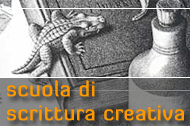
« indietro
Yusef Komunyakaa
Is the poet today charged with a social task or mandate as representative of shared values and ideas?
Historically, the question of the artist’s role in his or her community has been an on-going debate. How important is content? Does a system of aesthetics override all other concerns, and can such surface matters shape the true character of a work? Should the artist speak solely to his or her own vision? Is the making of art really an egoistical, bourgeois endeavor? Perhaps art wouldn’t exist if the questions didn’t exist. One only has to look at Denise Levertov’s translation of «The Artist» (from the Spanish translation of Toltec Codice de la Real Academia, fol. 315, v.) to understand how long the critique of the artist has been with us. Of course, a Toltec artist possessed a rather circumscribed position within his community, which usually was associated with utilitarian, sacred rituals. But there’s a poignant clarity in «The Artist», in this short poem-essay:
The artist: disciple, abundant, multiple, restless.
The true artist: capable, practicing, skillful;
maintains dialogue with his heart, meets things with his mind.
The true artist: draws out all from his heart,
works with delight, makes things with calm, with sagacity,
works like a true Toltec, composes his objects, works dexterously, invents;
arrange materials, adorns them, makes them adjust.
The carrion artist: works at random, sneers at the people,
makes things opaque, brushes across the surface of the face of things,
works without care, defrauds people, is a thief.
Is the poetic language’s lack of communicability a consequence of the poetry’s loss of its social representativeness and relevance?
Let’s face this basic fact: each established writer was also an amateur at one time. It is difficult to guess what works are going to endure, because talent and time are the final arbitrators. Ideally, a cultivated hierarchy isn’t necessarily desirable because the making of art involves a continuous process, an inquiry through observations and questions, and discovery happens in great moments of contemplation and tension. Yes, not the answer, but the question is what often drives the engine into the bloody heart of passion. The making of art changes its creator. When the artist is entangled in the process, he or she cannot have the reader or the receiver staring over his or her shoulder. However, since the poet is condemned and exulted to use language, the very tool that separates human beings from the so-called lower species, that which underlines our commonality, perhaps we are obligated to share meaning. Art is an action. And, of course, we are expected to be responsible for our actions. Early poetry seems to have developed as a way of glancing into mystery, of gaining a semblance of control over the unknown and the unknowable, often addressing spiritual concerns and philosophy; but I refuse to believe, however, that good poetry cannot continue to assist us in confronting that immense existential void, especially for the poet who trusts common language and imagery that surprise. Also, I think that the contemporary poet will find a home in the popular theatre that embraces the importance of poetic language on the stage. Collaboration between writers and musicians, actors and dancers, singers and storytellers, all this is important in an era of programmed disconnect and technological hypnosis.
To what extent does poetry today contribute to the renewal of ordinary (?) language or the language of culture? Is it possible to aknowledge songs as having that social representativeness that has for long pertained to poetry?
The popular song lyric cannot replace poetry. The lyric relies so heavily on musical accompaniment and timbre of the human voice for completion. But I do think that an echo of the other can be fruitful. The poet has to remain cognizant that language is our primary music, and that each poem is a composite of images that keeps us connected to the real world. Bridges are crossed in language. Why shouldn’t poetry and songs exist in the same frame of reference? There are certain singers – Dylan, Nina Simone, Son House – who place the word poetry into my mouth whenever I hear them. After all, we do exist in our time, our own skin-habit, and as artists our work should reflect our memories, observations, dreams, illusions and desires.
[a cura di Antonella Francini]
Yusef Komunyakaa, premio Pulitzer nel 1994, è autore di quattordici raccolte poetiche, saggi sulla poesia, libretti e testi teatrali in versi. Insegna scrittura creativa alla New York University dove occupa la posizione di Senior Distinguished Poet. In italiano sono usciti i volumi Il ritmo delle emozioni (Liberodiscrivere, 2004) e Totem (Le Lettere, 2006).
¬ top of page






